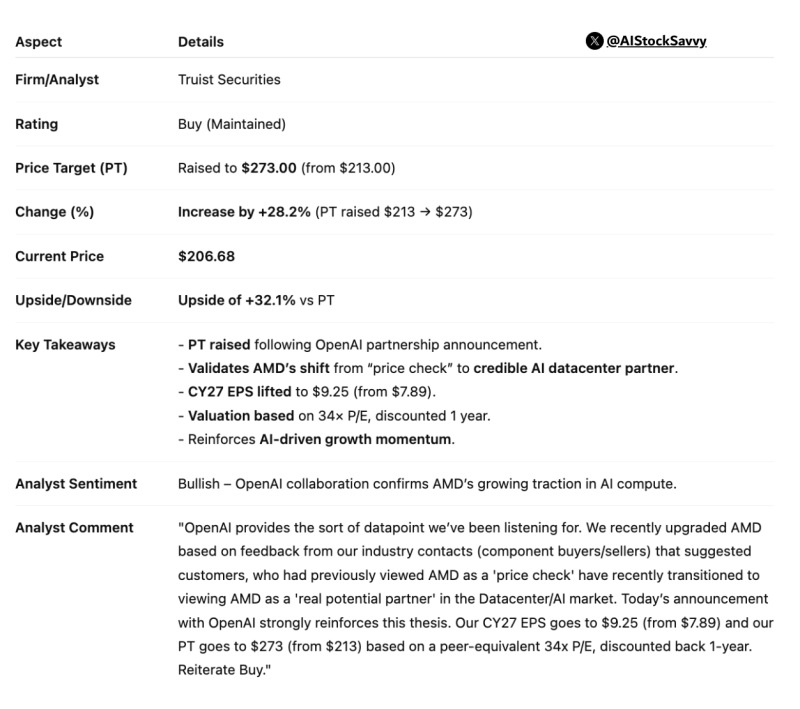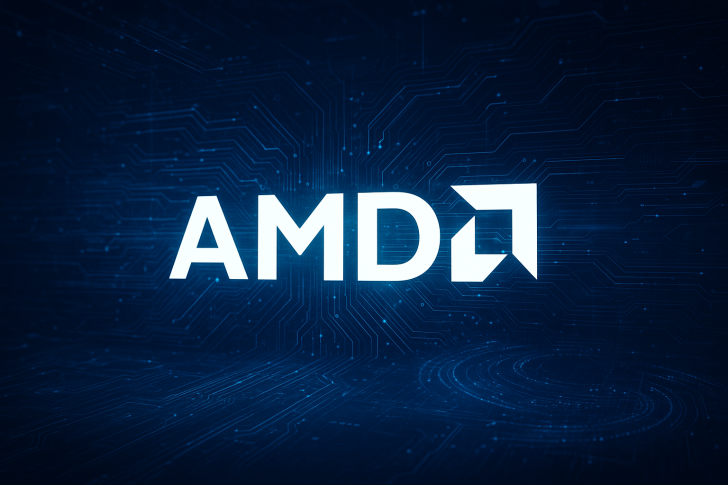Advanced Micro Devices (AMD) just got a significant vote of confidence from Wall Street. Truist Securities kept its Buy rating intact while bumping up the price target to $273 from $213 - a move that suggests roughly 32% upside from where the stock sits today. The revision reflects how AMD's tie-up with OpenAI has shifted the narrative around the chipmaker, positioning it as a legitimate player in the AI datacenter space rather than just another option.
Analyst Upgrade Highlights
In a note from Hardik Shah, Truist made it clear that AMD is no longer being treated as simply a fallback choice in the GPU market. The firm now sees it as a genuine contender in AI compute.

The price target jumped 28.2%, landing at $273, while the earnings forecast for CY27 moved up to $9.25 per share from $7.89. That valuation sits at 34x forward earnings, discounted back one year. The OpenAI partnership seems to be the catalyst behind this renewed confidence, reinforcing AMD's foothold in a sector where demand continues to outpace supply.
Technical Chart Analysis
On the chart, AMD has been holding steady around the $200 mark, which has become an important support zone. After bouncing from that level, the stock is now trying to push higher. There's resistance forming between $210 and $215, where selling pressure has kicked in a few times. If AMD can break through and hold above that range, the next logical targets would be $225 to $230, with the longer-term view pointing toward Truist's $273 projection. Momentum indicators are starting to look better, which lines up with the bullish analyst stance.
Why This Matters for Investors
The OpenAI partnership arrives at a critical time. Hyperscalers and enterprise clients are actively looking to diversify their AI compute infrastructure, and for years NVIDIA has been the default choice. AMD is now carving out real market share in datacenters, and this isn't just about riding a short-term wave. Wall Street is beginning to see structural growth potential tied to AI adoption across multiple industries, which suggests more than just cyclical strength.
 Usman Salis
Usman Salis

 Usman Salis
Usman Salis


